![Polyamory and Monogamy Statistics [Full Overview]](https://wp.bedbible.com/wp-content/uploads/2024/05/Polyamory-and-Monogamy-Statistics.png)
Polyamory and monogamy are two vastly different approaches to relationships, and they have become increasingly prevalent in today’s society.
With more people exploring non-traditional relationships, it’s essential to understand the differences between these two lifestyles. In this article, we will provide a comprehensive overview of the statistics surrounding polyamory and monogamy, including the prevalence of each, the demographics of those who practice each lifestyle, and the benefits and challenges of each approach.
Table of contents:
Key Findings
- 2% of adults identify as polyamorous, while 90% identify as monogamous, and 8% others.
- 6 years is the average length of a Polyamorous relationship. Monogamous relationships last about 7 years on average.
- Men are more likely than women to report having engaged in non-monogamous relationships.
- In some parts of Africa and Asia, polygamy is widespread, while monogamy is the norm in most Western countries.
- 42% would consider dating someone in an open or polyamorous relationship, while 35% said they would not consider it, and 23% were unsure. Indicating that polyamory is becoming more popular.
- 76% of mental health professionals reported having no formal training on working with consensually non-monogamous clients, highlighting a need for more education and resources on this topic.
- 43% of millennials say polyamorous is the ideal relationship for them.
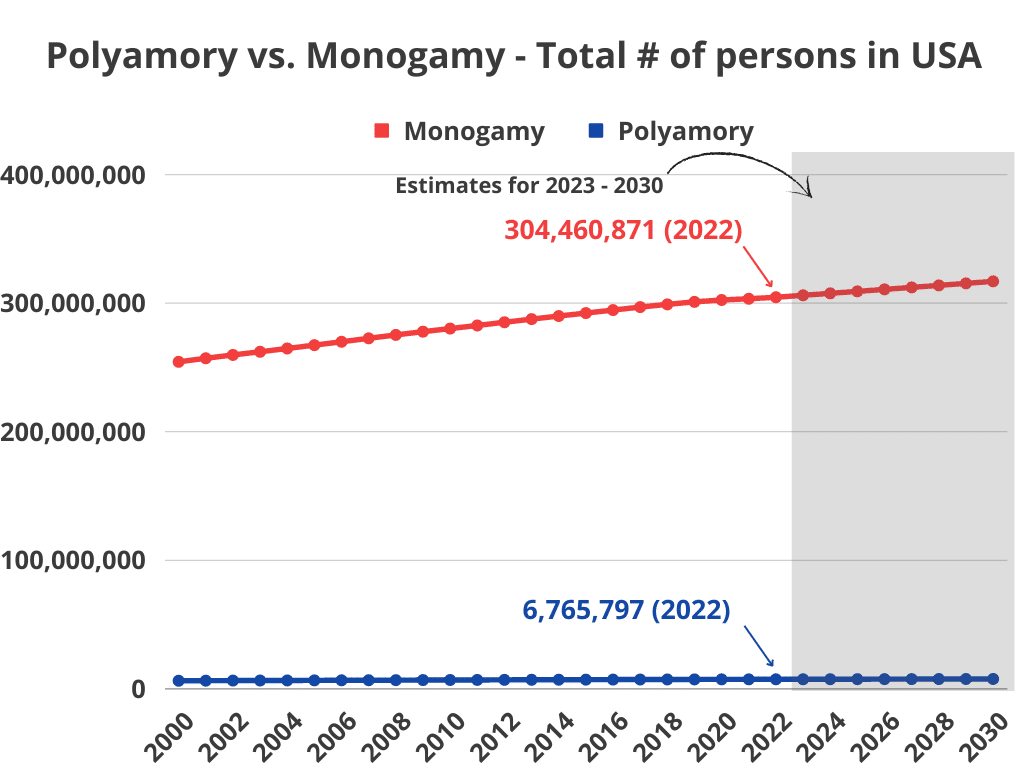
Monogamy Statistics
The definition/meaning of monogamy: Monogamy is a type of romantic relationship in which an individual has only one partner at a time. In a monogamous relationship, both partners agree to be sexually and emotionally exclusive to each other. Monogamy is often seen as the traditional or default type of relationship in many cultures and is widely practiced worldwide.
How common is monogamy?
- 9 out of 10 are in a mutually exclusive relationship also called monogamy (90%).
- Younger adults (ages 18-34) were more likely than older adults to believe that cheating is sometimes acceptable, with 33% of younger adults saying it is acceptable in certain circumstances compared to 15% of those ages 55 and older.
- People who reported being in sexually exclusive relationships had higher levels of sexual satisfaction and relationship satisfaction compared to those in non-exclusive relationships.
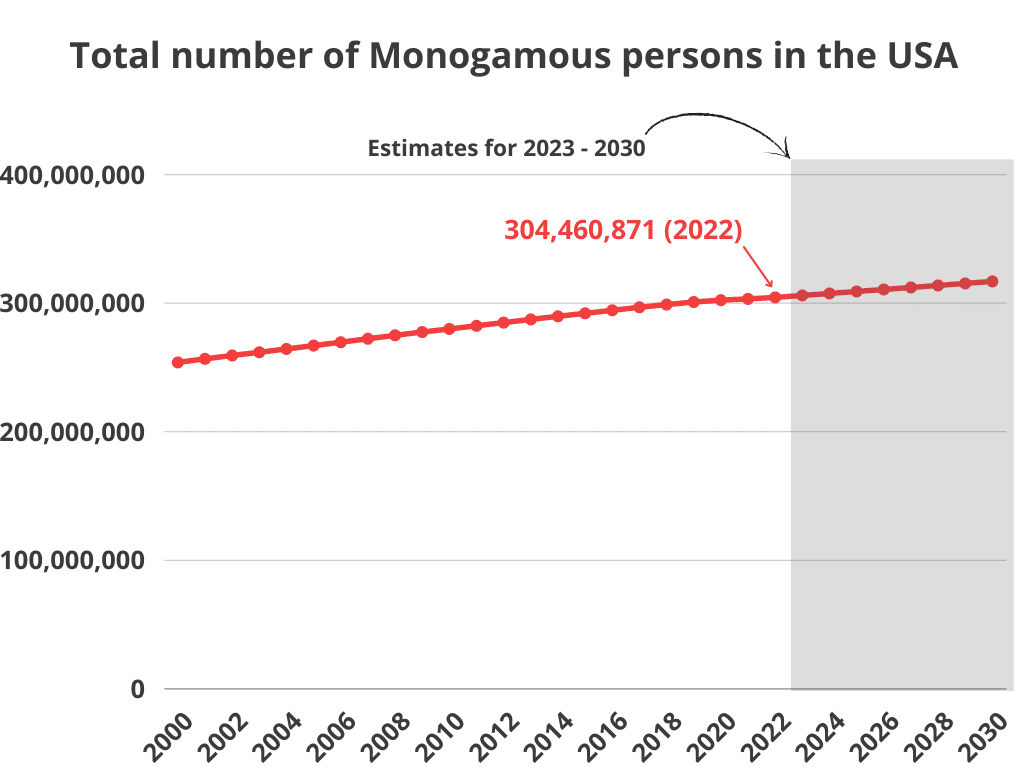
Monogamous marriage
- Monogamous marriage is the most common form worldwide, with approximately 80% of societies practicing some form of monogamy.
- Monogamous marriages tend to have higher levels of relationship quality and stability than non-monogamous marriages. Couples in monogamous marriages reported greater satisfaction with their relationship, greater trust, and lower rates of relationship dissolution compared to couples in non-monogamous marriages
Polyamory Statistics
The definition/meaning of polyamorous: Refers to the practice of having romantic or sexual relationships with multiple people at the same time, with the full knowledge and consent of everyone involved. It is a consensual and ethical form of non-monogamy, where individuals are free to form meaningful connections with more than one person without hiding it or breaking any agreements. The relationships involved in polyamory can take many different forms, including triads (three people in a relationship), quads (four people in a relationship), and networks (multiple interconnected relationships). If you’re looking for similar statistics we have created one about open marriages.
How common is polyamory?
- 2 out of 100 people are right now polyamorous.
- 20% of the participants had engaged in some form of consensual non-monogamy in their lifetime.
- 72% of respondents were white, while 16% identified as Black and 6% as Hispanic/Latino(a).
- 33% say polyamory relationships are the ideal form for them.
- Men are more likely to be in a polyamory relationship (8.9%) compared to women (4.9%)
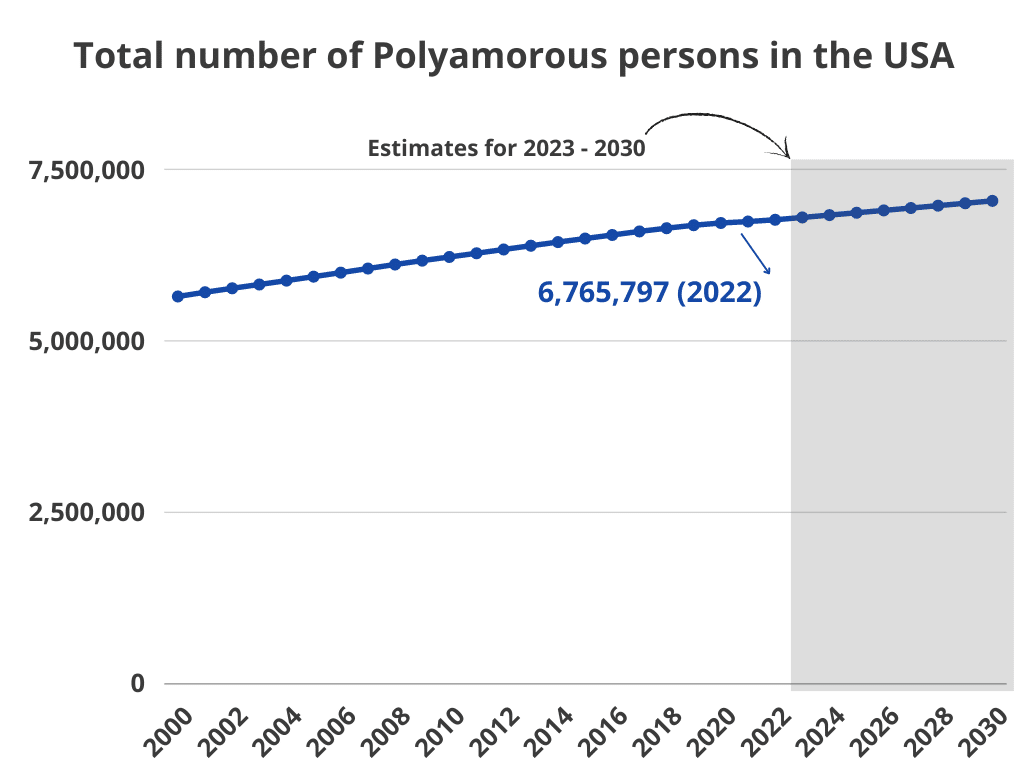
- Polyamory by age:
33-55: 8%
26-32: 7.2%
19-25: 6.4%
13-18: 7.7%
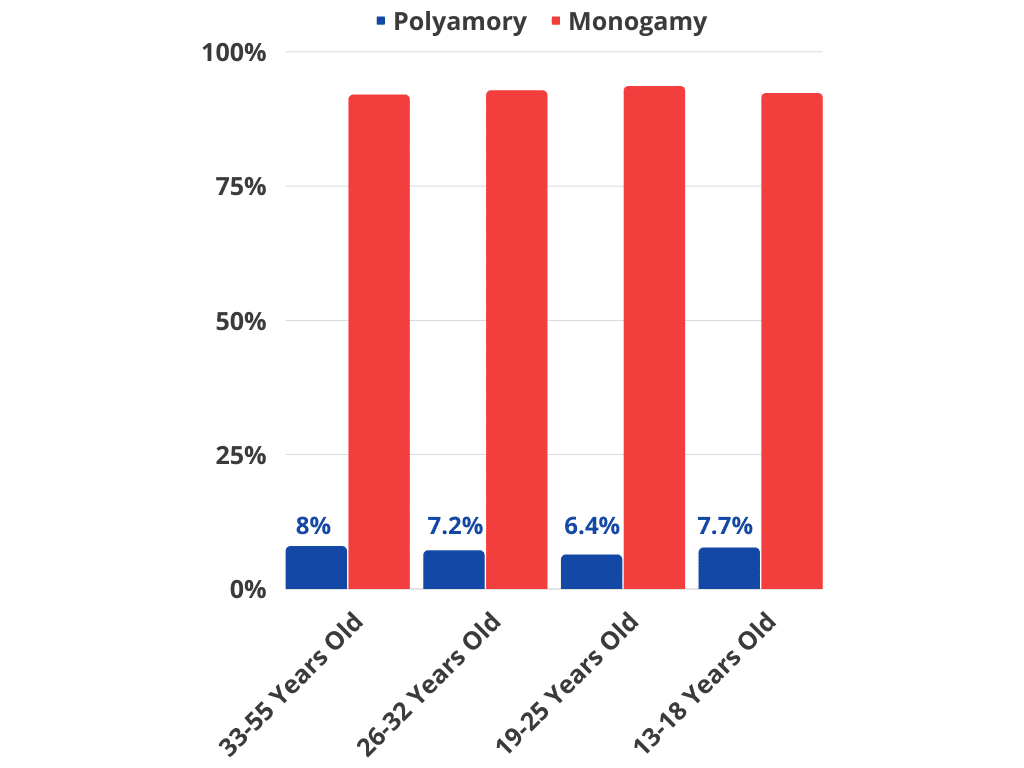
- Polyamory by region (percentage of religions that are polyamorous):
Hindu: 6.7%
Muslim: 5.9%
Christian: 5%
Buddhist: 6.4%
Atheist: 8.3%
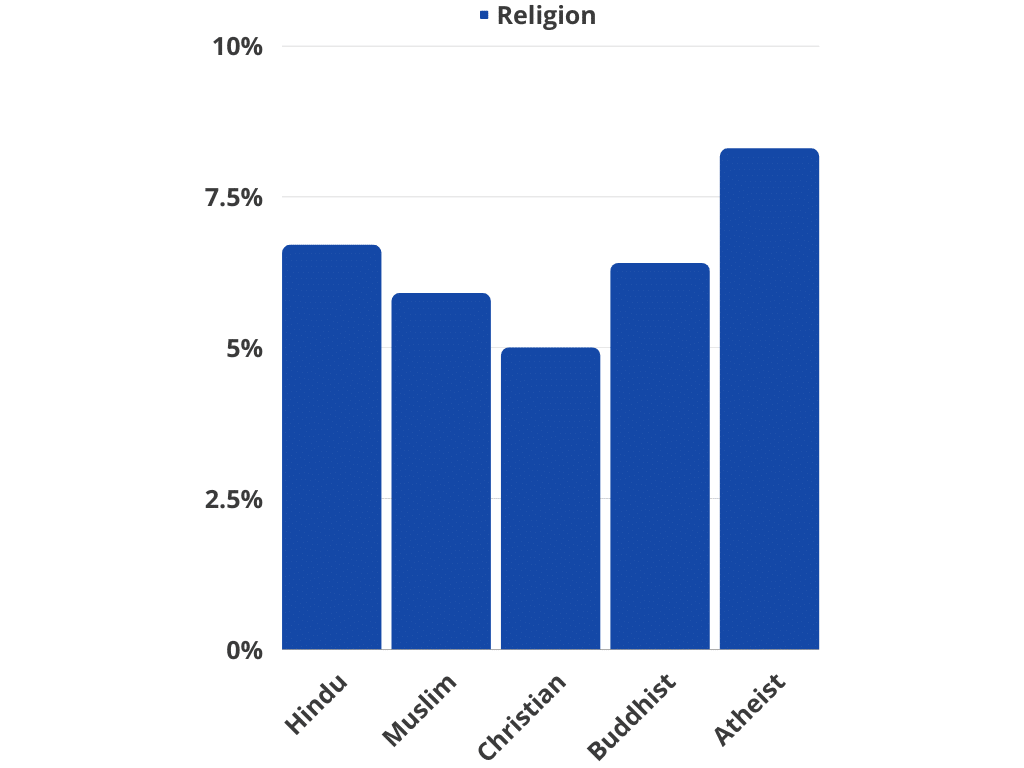
- Polyamory by sexual orientation (percentage of sexual attraction that is polyamorous):
Homosexual: 8.7%
Bisexual: 14.5%
Heterosexual: 5.9%
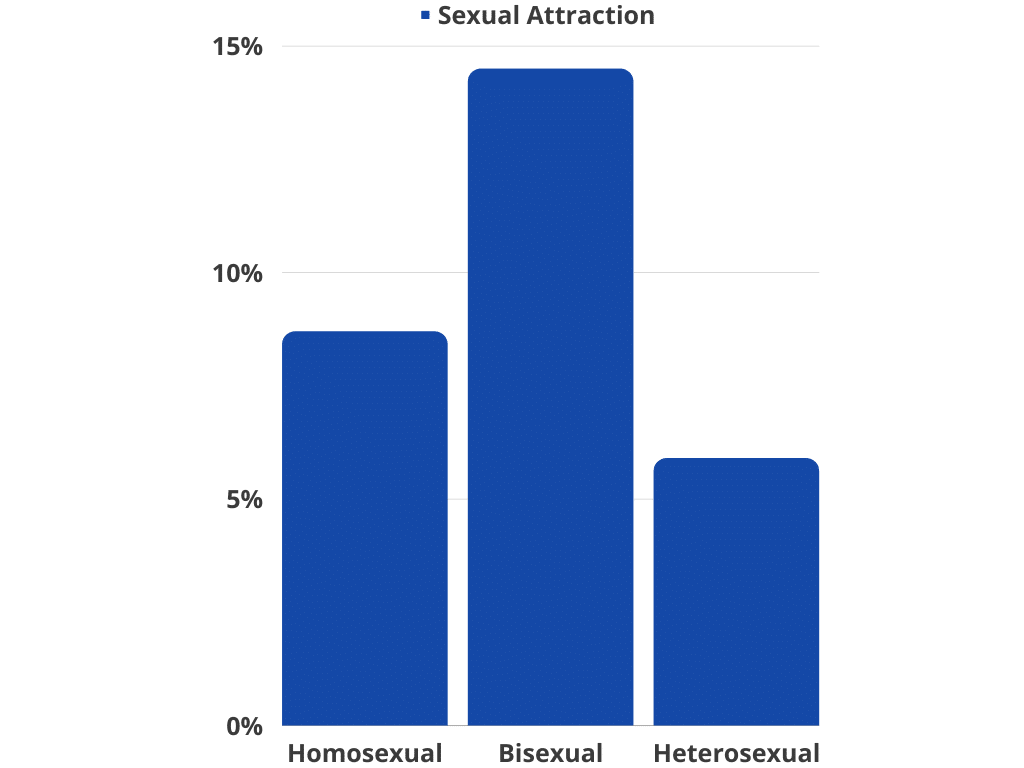
Polyamory divorce rate
- Only 5% of polyamorous relationships work long-term. In other words, 95% of polyamorous relationships do not hold.
- 7 out of 10 married polyamory couples end in divorce. That’s a divorce rate of 70%.
- 6 years is the average length of a Polyamorous relationship.
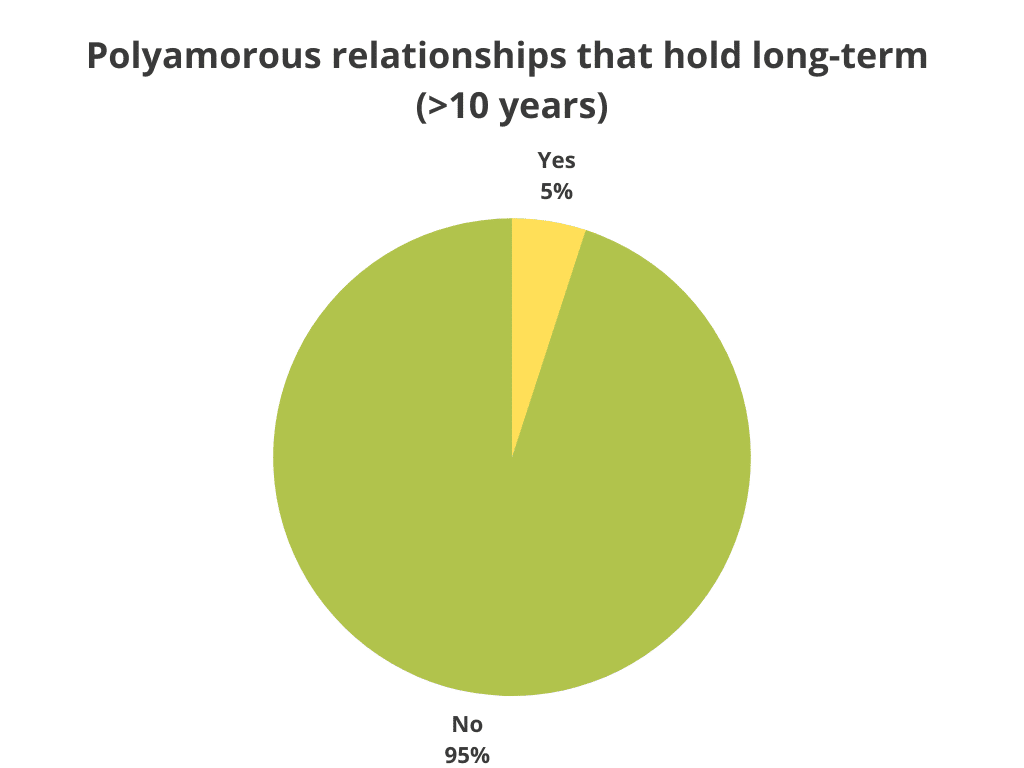
Are poly relationships healthy?
- Individuals in monogamous relationships reported better mental and physical health outcomes compared to those in non-monogamous relationships or single individuals.
Is polyamory legal in the US?
Polyamory, which refers to consensually non-monogamous relationships involving more than two people, is not illegal in the United States. The Supreme Court has upheld the right to privacy in intimate relationships, which includes the right to engage in consensual sexual activity with multiple partners.
However, it is important to note that bigamy, or the act of marrying more than one person at the same time, is illegal in all 50 states. This means that individuals who are already married cannot legally enter into additional marriages, even if all parties involved consent to it.
Polyamorous relationships can also face legal issues related to custody and inheritance, as laws around these topics generally assume a monogamous model of family structure. For example, some states may not recognize the legal rights of multiple parents in polyamorous families, which could complicate custody and visitation arrangements.
Polyamorous celebrities
While some celebrities may be private about their relationships, there are a few who have spoken publicly about being polyamorous or being in polyamorous relationships. Here are some examples:
- Jada Pinkett Smith and Will Smith: In 2018, Jada Pinkett Smith revealed on her talk show “Red Table Talk” that she and her husband Will Smith had experimented with polyamory in the past.
- Tilda Swinton: The Oscar-winning actress has been in a committed relationship with artist Sandro Kopp since 2004, but has also been in relationships with other people throughout their relationship.
- Alan Cumming: The Scottish actor and his husband Grant Shaffer have been in a polyamorous relationship for over 10 years.
- Bella Thorne: The actress, model, and singer has identified as bisexual and has been open about her polyamorous relationships.
- Angelina Jolie: While the actress and filmmaker have not explicitly identified as polyamorous, she has spoken about the possibility of being in a polyamorous relationship in the future.
